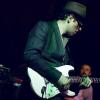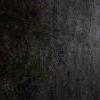-
Posts
388 -
Joined
-
Last visited
Reputation Activity
-
 M Carter got a reaction from JazzBox in Microphone for audio dialogues on set?
M Carter got a reaction from JazzBox in Microphone for audio dialogues on set?
The Samson is interesting - there's just a flood of chinese large and small di. condensers out there (with companies like ADK finding decent capsules and doing their own electronics and housings - I own an Area 51 and it's an impressive mic for the dollars) but I haven't seen a hyper myslef, especially this cheap. They're not reviewed that well by the studio guys using them on acoustic guitars and as drum overheads, but you never know...
The Aputure D3 is a shotgun, and there are plenty of affordable shotgun choices out there already.
-
 M Carter got a reaction from IronFilm in To Audio Experts - XLR inputs for Our DSLRs/Mirrorless cameras
M Carter got a reaction from IronFilm in To Audio Experts - XLR inputs for Our DSLRs/Mirrorless cameras
I'm amazed that not one response here has included the word "impedance". Generally, (in the realm of microphones) XLR gear is expecting a low impedance signal; and mini-plug gear is expecting a high impedance signal. I'd at least get a barrel-style XLR to 1/4 transformer adapter, and then add a 1/4 to 1/8 (though these days someone may make an XLR to 1/8?). The other issue is that those three pins each do something. Most camera-in jacks are TR (tip ring) for a mono input, or TRS (tip ring sleeve, three conducters) for a stereo input. I believe most DSLRs have a stereo mic input, but could be mistaken? So you have the potential for grounding problems as well.
The design of the XLR connector is "purely for the stability of the connection" - it's pretty robust - but most XLR mics - and any you'd really want to use on-set - will be XLRs that are using the three pins to carry the standard low impedance signal. You can do low impedance with any three-conducter setup (1/4 TRS is popular) but mics for on-set audio (ecluding lavs) will use the full-sized XLR, will require phantom power, and will be low-z.
Speaking of phantom power - some mics have an internal battery, but if not, you're limited to using dynamic mics which generally aren't used for film sound for a host of reasons.
There's another current thread here dealing with this exact subject. Unless this is just a hobby for the OP, I'd say at the very least get a decent preamp that converts the XLR input to a preamped 1/8 output. And for probably the same money, you could get, say, a Tascam DR60D ($169 if you shop around, and showing up used all over), which has phantom power, mic power, meters, headphone and camera out level controls, minus 6DB safety tracks, low cut, a limiter, slate tone, etc. Far as I know it's about the best budget solution to beginner's audio needs, and the adjustable camera out allows you to stage your gain and at least try to get a clean and strong signal to the camera if you don't want to synch in post (and still have a nice clean recorder track if the camera audio isn't optimal). I imagine it would really up the quality of something like a blade as well.
I know some of the monitor/recorders have audio ins and meters, but you're missing a lot of really necessary features - features that can really save your butt - and you're not talking investing thousand of bucks to get those features. If you're planning to charge money, I'd really recommend a pro solution, even something entry level like the DR - it will outlive your next ten cameras.
-
 M Carter got a reaction from JazzBox in Microphone for audio dialogues on set?
M Carter got a reaction from JazzBox in Microphone for audio dialogues on set?
If you're indoors, you may have better and more natural sound with a hyper cardioid than a shotgun. Thing is, there aren't a lot of hypers out there.
A budget favorite is the Oktava, but do some research and don't get a counterfeit mic, and learn about their handling issues. The At 4053b is the best "budget" value I'm aware of - but it's six hundred bucks. But if you have a studio, they're fantastic instrument mics as well and great for live sound.
I've gotten good sound when testing a pencil condenser (I have an ADK SD) but I find the 4053 to be pretty amazing for detail and sparkle and presence - and off-axis rejection with a decent sweet spot. If you have a small di condenser, test it against the shotgun in your shooting environment.
Go to DVXuser.com and poke around - they have one of the best audio-for-picture forums on the net.
I'm still kind of amazed that Rode or someone doesn't do a $300-range hyper - maybe because newbies think any mic used to record audio on set is a "shotgun"? (Or maybe someone does, I haven't seen one).
And an edit: looking at your links, you have two on-camera mount mics and one shotgun. I'd skip anything on-camera unless you're shooting events or just need sound to synch in post. You really want to get your mic as close to the talent as humanly possible. Unless you're shooting everyone with a 20mm and you're right in their faces, you need something off-camera.
And the Rode blimp is really a very nice piece of gear, well designed and a great value for the money.
-
 M Carter got a reaction from TheRenaissanceMan in To Audio Experts - XLR inputs for Our DSLRs/Mirrorless cameras
M Carter got a reaction from TheRenaissanceMan in To Audio Experts - XLR inputs for Our DSLRs/Mirrorless cameras
I'm amazed that not one response here has included the word "impedance". Generally, (in the realm of microphones) XLR gear is expecting a low impedance signal; and mini-plug gear is expecting a high impedance signal. I'd at least get a barrel-style XLR to 1/4 transformer adapter, and then add a 1/4 to 1/8 (though these days someone may make an XLR to 1/8?). The other issue is that those three pins each do something. Most camera-in jacks are TR (tip ring) for a mono input, or TRS (tip ring sleeve, three conducters) for a stereo input. I believe most DSLRs have a stereo mic input, but could be mistaken? So you have the potential for grounding problems as well.
The design of the XLR connector is "purely for the stability of the connection" - it's pretty robust - but most XLR mics - and any you'd really want to use on-set - will be XLRs that are using the three pins to carry the standard low impedance signal. You can do low impedance with any three-conducter setup (1/4 TRS is popular) but mics for on-set audio (ecluding lavs) will use the full-sized XLR, will require phantom power, and will be low-z.
Speaking of phantom power - some mics have an internal battery, but if not, you're limited to using dynamic mics which generally aren't used for film sound for a host of reasons.
There's another current thread here dealing with this exact subject. Unless this is just a hobby for the OP, I'd say at the very least get a decent preamp that converts the XLR input to a preamped 1/8 output. And for probably the same money, you could get, say, a Tascam DR60D ($169 if you shop around, and showing up used all over), which has phantom power, mic power, meters, headphone and camera out level controls, minus 6DB safety tracks, low cut, a limiter, slate tone, etc. Far as I know it's about the best budget solution to beginner's audio needs, and the adjustable camera out allows you to stage your gain and at least try to get a clean and strong signal to the camera if you don't want to synch in post (and still have a nice clean recorder track if the camera audio isn't optimal). I imagine it would really up the quality of something like a blade as well.
I know some of the monitor/recorders have audio ins and meters, but you're missing a lot of really necessary features - features that can really save your butt - and you're not talking investing thousand of bucks to get those features. If you're planning to charge money, I'd really recommend a pro solution, even something entry level like the DR - it will outlive your next ten cameras.
-
 M Carter got a reaction from sandro in Nx1 16-50 2-2.8 exposure change while zooming.
M Carter got a reaction from sandro in Nx1 16-50 2-2.8 exposure change while zooming.
As I posted earlier, no exposure shifts with a constant-aperture Nikkor zoom on the NX1.
-
 M Carter got a reaction from mercer in Ikan VL5e?
M Carter got a reaction from mercer in Ikan VL5e?
If you need color accuracy, look for a monitor you can calibrate. Even a screen with blue-only will be a big step up in color if the adjustments let you get it close. If you're shooting DSLRs, you'll need a way to get clean bars into the thing via HDMI (by "clean" I mean they bypass computer color settings and send the edit window of your NLE out via HDMI) - but there are pretty affordable solutions like the Intensity card, so you can render up some bars in your NLE and adjust the screen. This is handy for editing as well - bolt a magic arm to your desk and use your on-camera screen to check color when editing.
-
 M Carter got a reaction from mercer in Ikan VL5e?
M Carter got a reaction from mercer in Ikan VL5e?
If you don't get any answers - see if you can track down the user manual. Image flip is pretty common. (I know, you'll need an owner or a good review for the other info.)
-
 M Carter got a reaction from User in Splitting A ProRes File - Without Re-Encoding?
M Carter got a reaction from User in Splitting A ProRes File - Without Re-Encoding?
I don't think anyone thinks of ProRes as a delivery codec. It may not be the most efficient codec around as far as file size, but I assume it's striking a compromise between file size and efficiency. And it's crazy efficient in the NLE workflow - you can very easily edit 1080 on a pre-intel PPC mac all day.
If it's news to anyone that prores is an editing codec and H264 is a delivery codec, they probably have some studying to do. (And yes, I'm aware people edit with H264, but I don't think it's optimal).
-
 M Carter reacted to Cinegain in Sigma 20mm F1.4 ART review
M Carter reacted to Cinegain in Sigma 20mm F1.4 ART review
Sure, when good is good enough for your own personal projects and travels... but on actual collaborative and paid projects it's more like...
And of course you want consistency, apply good practice and get the best motion picture quality...
-
 M Carter got a reaction from Zak Forsman in Sigma 20mm F1.4 ART review
M Carter got a reaction from Zak Forsman in Sigma 20mm F1.4 ART review
The "180 - rule" has nothing to do with shutter speed. It's about the visual arc of the setting. It's a framing and blocking and camera-movement convention, not a frame-rate or shutter speed rule.
There are these things called "matte boxes" that allow you to set ND for whatever lens you have, and still be in complete control of f-stop and shutter speed. And they don't rely on "variable ND" (which isn't ND at all but stacked polarizers - the "amateur hour" of image control).
But go ahead and shoot everything at 1/500th and F22 and stack some polarizers on it for good measure. If someone can't see the difference between 1/48th and 1/500th, they probably can't tell the difference between polarizers and ND anyway.
Off my soapbox. (And when you get serious about this, get a matte box and a few 4x4 ND's. They're really very manageable. I still can't imagine Roger Deakins saying "I need to soften up this background - bring me two polarizers, please".)
So could this:
http://www.bhphotovideo.com/bnh/controller/home?O=&sku=968041&gclid=CMCRpfnEzswCFZY1aQod2bgMaQ&is=REG&ap=y&m=Y&c3api=1876%2C92051678882%2C&Q=&A=details
-
 M Carter got a reaction from Michal Gajdoš in High demand for ARRI Alexa 65
M Carter got a reaction from Michal Gajdoš in High demand for ARRI Alexa 65
Seriously? Do you think a crap job using high-end gear makes everything else less "special"?
Here's an amazing idea - it's not about the gear. The only way to make a WalMart spot "special" is with great concept, writing, talent, lighting, shooting and editing.
Another shocking concept: A crap job shot on an Alexa 65 will still look like crap.
A stunning and radical suggestion: amazing and moving stories have been made with really low-end gear, few lights, and tiny crews.
A soul-shattering observation: very few people can discuss at length the cameras and lenses used for "Citizen Kane", "2001", and… well, you get the idea (sheesh, I hope anyway).
An intriguing question: Can you tell me, off the top of your head, the gear used by Wong Kar-wai to shoot "2046"? Does it even matter? (It's, umm, really damn gorgeous if you haven't seen it).
And finally, an earth-shaking idea: many "true high end jobs like features" are crap, even when shot with amazing gear.
I would sit down in a dark room and ponder those ideas and see if they make any sort of sense.
-
 M Carter got a reaction from User in Splitting A ProRes File - Without Re-Encoding?
M Carter got a reaction from User in Splitting A ProRes File - Without Re-Encoding?
But the OP is talking ProRes. It's awesome that a book from the 480p DV era (1990?? 2000?) says "don't recompress', but I'll tell you from years of working with ProRes, stop worrying. You can compress it again and again and you won't see any artifacts.
Every week I stabilize a ProRes clip, render it, then retime that render at several different speeds. I'll do a couple versions with the variable diffusion plugin, and I'll render a master edit to ProRes. You can run it through your system many times and it holds up like a mofo.
Show me a third or fourth generation ProRes clip with "artifacts" that aren't caused by pushing the footage too hard (artifacts you'd see in the first go-round). I very, very rarely denoise ProRes (maybe for a night shoot as 1200 iso). The first thing I do is convert whatever camera format comes in the door to ProRes. You can beat the daylights out of it and my system cuts it like butter, 1080 or 4k or whatever you got.
All of the conjecture on this thread is fine if you're in an H264 world. I run a ProRes shop and I have zero worries about generational loss in a reasonable (or even a "kinda pushing it") workflow.
-
 M Carter got a reaction from dafreaking in High demand for ARRI Alexa 65
M Carter got a reaction from dafreaking in High demand for ARRI Alexa 65
Seriously? Do you think a crap job using high-end gear makes everything else less "special"?
Here's an amazing idea - it's not about the gear. The only way to make a WalMart spot "special" is with great concept, writing, talent, lighting, shooting and editing.
Another shocking concept: A crap job shot on an Alexa 65 will still look like crap.
A stunning and radical suggestion: amazing and moving stories have been made with really low-end gear, few lights, and tiny crews.
A soul-shattering observation: very few people can discuss at length the cameras and lenses used for "Citizen Kane", "2001", and… well, you get the idea (sheesh, I hope anyway).
An intriguing question: Can you tell me, off the top of your head, the gear used by Wong Kar-wai to shoot "2046"? Does it even matter? (It's, umm, really damn gorgeous if you haven't seen it).
And finally, an earth-shaking idea: many "true high end jobs like features" are crap, even when shot with amazing gear.
I would sit down in a dark room and ponder those ideas and see if they make any sort of sense.
-
 M Carter got a reaction from IronFilm in High demand for ARRI Alexa 65
M Carter got a reaction from IronFilm in High demand for ARRI Alexa 65
Seriously? Do you think a crap job using high-end gear makes everything else less "special"?
Here's an amazing idea - it's not about the gear. The only way to make a WalMart spot "special" is with great concept, writing, talent, lighting, shooting and editing.
Another shocking concept: A crap job shot on an Alexa 65 will still look like crap.
A stunning and radical suggestion: amazing and moving stories have been made with really low-end gear, few lights, and tiny crews.
A soul-shattering observation: very few people can discuss at length the cameras and lenses used for "Citizen Kane", "2001", and… well, you get the idea (sheesh, I hope anyway).
An intriguing question: Can you tell me, off the top of your head, the gear used by Wong Kar-wai to shoot "2046"? Does it even matter? (It's, umm, really damn gorgeous if you haven't seen it).
And finally, an earth-shaking idea: many "true high end jobs like features" are crap, even when shot with amazing gear.
I would sit down in a dark room and ponder those ideas and see if they make any sort of sense.
-
 M Carter got a reaction from TheRenaissanceMan in Sigma 20mm F1.4 ART review
M Carter got a reaction from TheRenaissanceMan in Sigma 20mm F1.4 ART review
The "180 - rule" has nothing to do with shutter speed. It's about the visual arc of the setting. It's a framing and blocking and camera-movement convention, not a frame-rate or shutter speed rule.
There are these things called "matte boxes" that allow you to set ND for whatever lens you have, and still be in complete control of f-stop and shutter speed. And they don't rely on "variable ND" (which isn't ND at all but stacked polarizers - the "amateur hour" of image control).
But go ahead and shoot everything at 1/500th and F22 and stack some polarizers on it for good measure. If someone can't see the difference between 1/48th and 1/500th, they probably can't tell the difference between polarizers and ND anyway.
Off my soapbox. (And when you get serious about this, get a matte box and a few 4x4 ND's. They're really very manageable. I still can't imagine Roger Deakins saying "I need to soften up this background - bring me two polarizers, please".)
So could this:
http://www.bhphotovideo.com/bnh/controller/home?O=&sku=968041&gclid=CMCRpfnEzswCFZY1aQod2bgMaQ&is=REG&ap=y&m=Y&c3api=1876%2C92051678882%2C&Q=&A=details
-
 M Carter got a reaction from kidzrevil in Can you upload NX1 H265 files directly to YouTube?
M Carter got a reaction from kidzrevil in Can you upload NX1 H265 files directly to YouTube?
Charbax, you are either a serious optimist or you don't read many photography blogs! (It's cool, I like optimism…)
-
 M Carter got a reaction from Ed_David in Your content will need to be approved by a moderator
M Carter got a reaction from Ed_David in Your content will need to be approved by a moderator
Damn it, I'm almost out of chinese viagra...
-
 M Carter got a reaction from ricardo_sousa11 in Your content will need to be approved by a moderator
M Carter got a reaction from ricardo_sousa11 in Your content will need to be approved by a moderator
Damn it, I'm almost out of chinese viagra...
-
 M Carter got a reaction from Liszon in Your content will need to be approved by a moderator
M Carter got a reaction from Liszon in Your content will need to be approved by a moderator
Damn it, I'm almost out of chinese viagra...
-
 M Carter got a reaction from andrgl in Your content will need to be approved by a moderator
M Carter got a reaction from andrgl in Your content will need to be approved by a moderator
Damn it, I'm almost out of chinese viagra...
-
 M Carter got a reaction from kidzrevil in One Lens?
M Carter got a reaction from kidzrevil in One Lens?
I don't even have to think it over - lately almost all my shooting is with the Nikkor 28-70 "beast". Lots of corporate stuff. Sharp wide open, great IQ, out of focus areas get a nice glow. Aperture ring and built like a tank. Wide open you can let it flare in high-key setups to get a nice softness with sharp details, or flag it off for deeper contrast. Very low distortion wide and the 70mm end is lovely. Takes a heck of a focus gear and generally needs a lens support, but very glad I have it. And kind of a steal used, they can be found under $1k, and since many of them had lame focus motors, you can find one needing the motor repair for a steal if you don't need the AF.
The only thing I miss with it is that 80mm Nikkor look for interviews, but having the zoom is really convenient for one-man corporate gigs - makes it much easier to get good framing in a tight office, and then you can grab your b-roll without swapping lenses.
-
 M Carter got a reaction from AaronChicago in "Organic" looking lenses
M Carter got a reaction from AaronChicago in "Organic" looking lenses
Figured as much, you come across as a classy guy with good taste - hard to imagine you rocking a series-E!
(But as I said, if money is tight, the Series-E 100 2.8 is really more special than the reviews would have you believe. If you can't afford the classic 105mm, it's a steal at $70-$100 or so. The Series-E 28 is pretty much mush wide open, OK at F4 or so).
-
 M Carter got a reaction from Raafi Rivero in Mac OSX/ Editing Software - Poll
M Carter got a reaction from Raafi Rivero in Mac OSX/ Editing Software - Poll
Resolve is interesting, but from what I've read, we're a release or two away from it being your main editor.
I'm in the same boat - STILL cutting in FCP7 and using AE for much of the stuff a modern NLE does natively. I finally have some time to upgrade hardware & software, I'l probably start with FCPX and see what I think.
-
 M Carter got a reaction from gsenroc in 2013 MacBook Pro - OSX 10.8.5 - Premiere Pro 8.2.0 - Software Update Before I Continue Editing?
M Carter got a reaction from gsenroc in 2013 MacBook Pro - OSX 10.8.5 - Premiere Pro 8.2.0 - Software Update Before I Continue Editing?
…and after the last few major upgrades I've done, I've learned that grownups CAREFULLY SAVE THEIR PURCHASE CODES for plugins… the serial numbers or whatever, the download link, and a master list of plugins for everything, all in one place. It can be months after an upgrade and I'm mixing in protools and realize "that vintage comp emulation would be tits on this"… and it's not there… grrrr. Trying to remember to do that every time I buy something.
One thing I miss about the previous Mac Pro? All those places for hard drives. It was so easy to pop in an SSD and boot back and forth - and still have your older OS drive accessible if you needed to dig through the library or whatever.
-
 M Carter got a reaction from Mat Mayer in 2013 MacBook Pro - OSX 10.8.5 - Premiere Pro 8.2.0 - Software Update Before I Continue Editing?
M Carter got a reaction from Mat Mayer in 2013 MacBook Pro - OSX 10.8.5 - Premiere Pro 8.2.0 - Software Update Before I Continue Editing?
If at all possible when you upgrade to a major OS version, stick it on a partition or a separate boot drive (clone your current boot drive and then boot from the clone and install the new OS and you'll see how everything will work through the upgrade process to actual real-world work). Test everything you can think of on the new one. if something's not ready for prime time, you can get straight back to work on your old drive. When you finally decide it's cool to switch over, keep the old version handy for a few more weeks just in case.
I assume most people working with this level of software are only using their boot drives for system, apps, and maybe email and invoicing. Maybe music and personal photos as well. That's really the way to go (and you should be backing up your boot drive as well as your raids and work drives). Keeping your boot free of work and renders and scratch files makes testing a new OS a lot easier.











